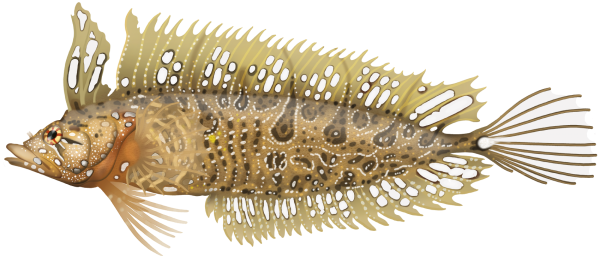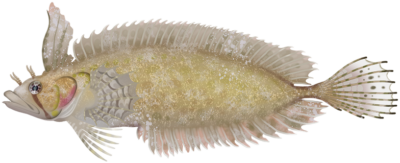Quick Facts
Scientific name
Heteroclinus Tristis
Other names
Forster's Weedfish, Sharpnose Weedfish
Size
Up to 30 cm (11 in)
Weight
Up to .25 kg (.55 lb)
Distribution
Habitat & AU Distribution
Coastal waters near sandy, weedy & seagrass areas of rocky reefs
Depth Range
1 - 15 m (50 ft)

Interesting Info
- The Longnose Weedfish is endemic to the southern and eastern coastlines of Australia. It can be found from New South Wales, around the southern coast of Victoria, and into parts of South Australia, Western Australia and Tasmania.
- The Longnose Weedfish has a distinctive appearance. It has an elongated body with a slender, tapering snout, which gives it its common name. The coloration can vary but is often mottled greenish and brown or camouflaged to blend with its surroundings.
- Longnose Weedfish have a specialised mouth structure with numerous small teeth, allowing them to feed on small invertebrates and algae found in their natural habitat.
- These fish have excellent camouflage capabilities, enabling them to blend seamlessly with their surroundings. This adaptation helps them hide from predators and also enhances their ability to ambush prey.
- Longnose Weedfish can change their coloration to some extent, enabling them to match the surrounding environment more effectively. This ability helps them avoid predation and increases their chances of successful hunting.
- They are known for their fascinating locomotion. They use their pectoral fins to “walk” along the substrate, moving in a series of coordinated and deliberate steps. This unique movement adds to their distinctiveness and makes them an intriguing species to observe.
- Breeding habits of the Longnose Weedfish are influenced by seasonal variations. They typically breed during the spring and summer months, which coincide with warmer water temperatures.
- Male Longnose Weedfish play an active role in parental care. He remains in close proximity to the nest, fanning the eggs with his pectoral fins to ensure adequate oxygen supply. This behaviour helps prevent the growth of fungi and maintains optimal conditions for the developing embryos.
- They have average lifespan between 3 – 6 years.
Species Interaction
Snorkeling & Diving
Longnose Weedfish are fascinating to observe in the wild, making them a popular sight for snorkelers and divers along the Australian coast. Their ability to blend with their surroundings and their intricate movements among the algae and weed beds can provide an exciting and immersive experience.
Scientific Classification
Kingdom: Animalia
Phylum: Chordata
Class: Actinopterygii
Order: Perciformes
Family: Clinidae
Genus: Heteroclinus
Species: Heteroclinus Tristis
Conservation Status
In Australia, the Longnose Weedfish is considered to be of “Least Concern” in terms of conservation status. This indicates that the species is not currently facing significant threats or declines in population size.
Recreational Viewing
- Snorkeling & Scuba
Finding: Intermediate
Temperament: Peaceful
Location: Inner Reef, Lagoon, Seagrass Beds
Danger: None





